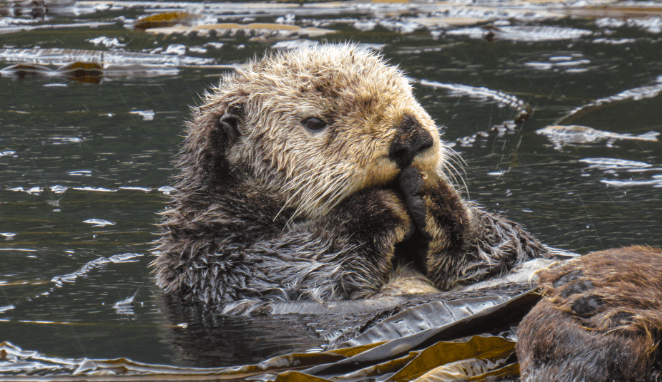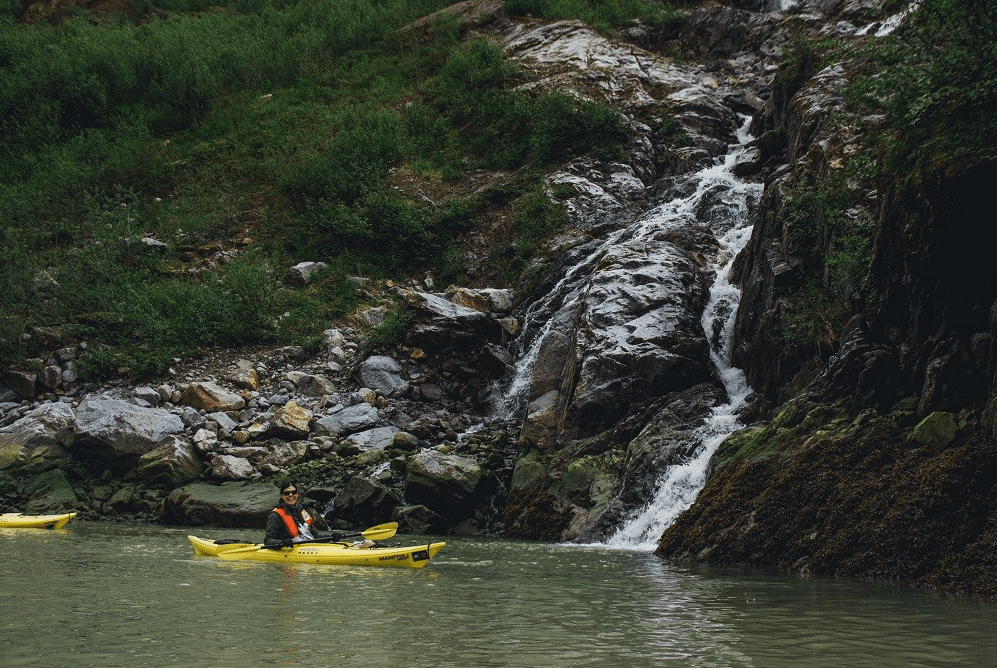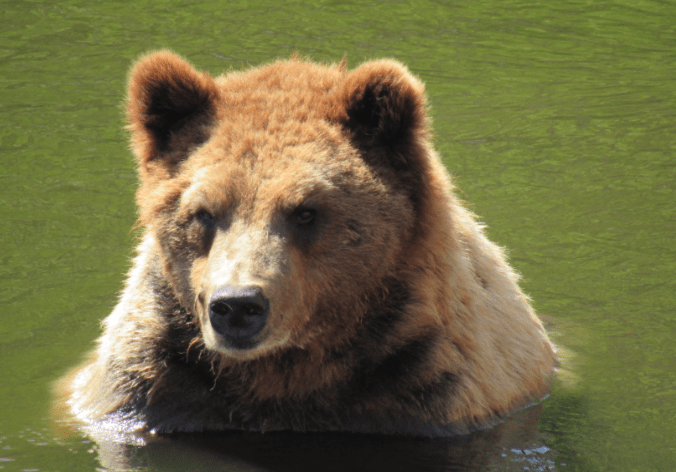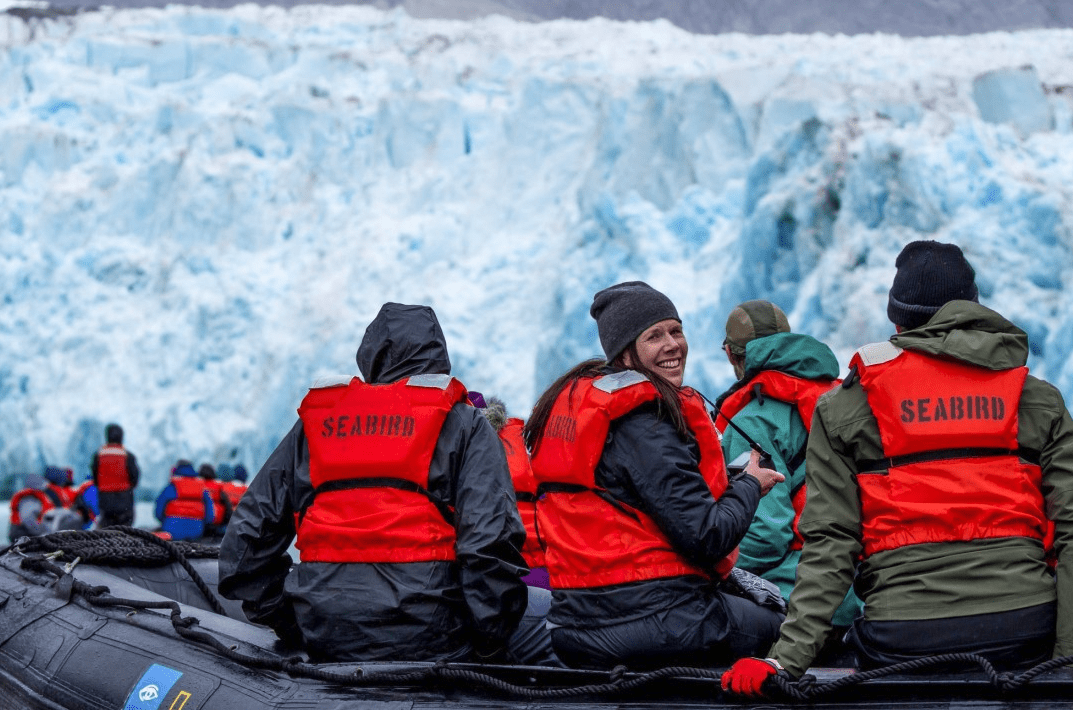By Brandye Alexander
My passport is my prized possession, but my adventure in wild and wonderful Alaska was a powerful reminder that you don't need to leave the U.S. to feel a world away. The Last Frontier is a land full of fantastic wonders, from its majestic landscapes and fascinating wildlife to its unique native cultures and colorful local characters.
My 6-day voyage through the Inside Passage aboard the National Geographic Sea Bird began in Sitka, and as our plane made its descent to the fishing town of 8,800 on the west side of Baranof Island, I was struck by the rugged beauty of Southeast Alaska. Snow-capped peaks and Mount Edgecumbe—a dormant volcano—loomed in the distance, surrounded by dense forest.
Accessible only by air and sea, Sitka was a pleasant place to while away an afternoon, with several attractions a short stroll from the city’s charming waterfront. The landmark Russian Orthodox Church, with its domed cathedral, sits in the city center as a reminder of Alaska’s history as a Russian colony prior to becoming the 49th state. In nearby Sitka National Historic Park, towering Tlingit and Haida totems document the history and culture of the tribes. Just outside of town, animal lovers will find two centers dedicated to caring for wildlife—Fortress of the Bear, home to orphaned black and brown bears rescued as cubs; and the Alaska Raptor Center, which rehabilitates injured bald eagles and other birds of prey. The residents of this isolated and beguiling place are as interesting as the attractions, and a stop at one of the town’s watering holes or restaurants offers the perfect opportunity to mix with locals.



After a day about town, we bid Sitka farewell and set off on the 62-passenger National Geographic Sea Bird. After sailing overnight through Sergius Narrows and Peril Strait, we anchored in Hanus Bay the following day for the first of what would become our twice-a-day excursions into the wild by DIB (a motorized Demaree Inflatable Boat), foot, kayak or even stand up paddleboard. We went ashore for a guided nature walk on the Lake Eva trail, where we passed through pristine wilderness, taking in the splendor of this small slice of the Tongass National Forest with its old-growth Sitka spruce and Western hemlocks, along with the scent of earth dampened by the morning’s rain.
Another trip highlight was our stop in the Inian Islands, where we set out in DIBs, catching sight of a humpback whale before venturing to where the Gulf of Alaska meets the northern reaches of the Inside Passage. Here, the nutrient-rich waters provide an influx of fish for hungry Steller sea lions to feed upon, while huge numbers of sea birds hovered above hoping to scoop up their leftovers. We also spotted numerous bald eagles and sea otters during our outing.
Our only brush with “civilization” during our journey came in Haines, a town of 2,300 and known as the adventure capital of Alaska with options to hike Mount Riley, the highest point on the Chilkat Peninsula; bike around a glacial lake; or raft down the Chilkat River to the Chilkat Bald Eagle Preserve with the world’s highest concentration of bald eagles. About 20 miles north of Haines lies the tiny Tlingit village of Klukwan and home of the Jilkaat Kwaan Cultural Heritage Center. Locals shared insights of their culture and traditions with us as we toured a smokehouse, a fish drying shed, a traditional longhouse, and a performance of drumming and dancing. We even saw a 37-foot-long canoe carved by hand!
Back in Haines, we climbed into a DHC-2 Beaver for a flightseeing tour over Glacier Bay National Park. As we soared over Rainbow and Davidson Glaciers, the soft afternoon light illuminated intriguing patterns, colors, and textures. With our bird’s eye view, we spotted dozens of mountain goats and even a few bears.
Our last full day at sea proved exceptional as we made our way up Endicott Arm, a magnificent fjord lined by waterfalls and steep mountains, and increasingly filled with ice as we neared our ultimate destination—Dawes Glacier, the second-most southern tidewater glacier in the Northern Hemisphere. Cruising by DIB around mini-icebergs, we kept an eye out for harbor seals, as we made our way for a closer look at the towering glacier. From our water-level perch, we watched in awe as the glacier calved huge chunks of ice that dropped into the water with a loud crash and sent gentle waves rippling our way. This dramatic display of nature was the perfect way to cap off our incredible journey before heading on to Juneau, where we disembarked the following morning.
In the true spirit of expedition-style travel, this trip focused on active exploration of the destination—the experience on ship was also a delight. The accommodations were comfortable, and passengers spent much of their time taking in the scenery from the ship’s bow or sundeck, or enjoying the casual, intimate atmosphere and camaraderie among the crew and fellow travelers in the lounge. In addition to sharing their knowledge and passion during excursions and presentations, the guides and naturalists joined us at meals, where the conversations flowed naturally through a range of fascinating topics. They were as excited and engaged in learning about our adventures as we were theirs.
In hindsight, Alaska should have been higher among my list of travel priorities. Now that I’ve gotten a glimpse, it’s clear my first visit there will not be my last.
